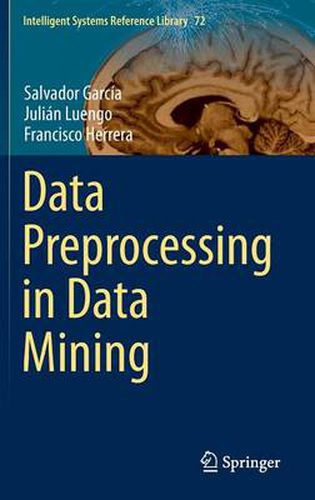Readings Newsletter
Become a Readings Member to make your shopping experience even easier.
Sign in or sign up for free!
You’re not far away from qualifying for FREE standard shipping within Australia
You’ve qualified for FREE standard shipping within Australia
The cart is loading…






This title is printed to order. This book may have been self-published. If so, we cannot guarantee the quality of the content. In the main most books will have gone through the editing process however some may not. We therefore suggest that you be aware of this before ordering this book. If in doubt check either the author or publisher’s details as we are unable to accept any returns unless they are faulty. Please contact us if you have any questions.
Data Preprocessing for Data Mining addresses one of the most important issues within the well-known Knowledge Discovery from Data process. Data directly taken from the source will likely have inconsistencies, errors or most importantly, it is not ready to be considered for a data mining process. Furthermore, the increasing amount of data in recent science, industry and business applications, calls to the requirement of more complex tools to analyze it. Thanks to data preprocessing, it is possible to convert the impossible into possible, adapting the data to fulfill the input demands of each data mining algorithm. Data preprocessing includes the data reduction techniques, which aim at reducing the complexity of the data, detecting or removing irrelevant and noisy elements from the data.
This book is intended to review the tasks that fill the gap between the data acquisition from the source and the data mining process. A comprehensive look from a practical point of view, including basic concepts and surveying the techniques proposed in the specialized literature, is given.Each chapter is a stand-alone guide to a particular data preprocessing topic, from basic concepts and detailed descriptions of classical algorithms, to an incursion of an exhaustive catalog of recent developments. The in-depth technical descriptions make this book suitable for technical professionals, researchers, senior undergraduate and graduate students in data science, computer science and engineering.
$9.00 standard shipping within Australia
FREE standard shipping within Australia for orders over $100.00
Express & International shipping calculated at checkout
This title is printed to order. This book may have been self-published. If so, we cannot guarantee the quality of the content. In the main most books will have gone through the editing process however some may not. We therefore suggest that you be aware of this before ordering this book. If in doubt check either the author or publisher’s details as we are unable to accept any returns unless they are faulty. Please contact us if you have any questions.
Data Preprocessing for Data Mining addresses one of the most important issues within the well-known Knowledge Discovery from Data process. Data directly taken from the source will likely have inconsistencies, errors or most importantly, it is not ready to be considered for a data mining process. Furthermore, the increasing amount of data in recent science, industry and business applications, calls to the requirement of more complex tools to analyze it. Thanks to data preprocessing, it is possible to convert the impossible into possible, adapting the data to fulfill the input demands of each data mining algorithm. Data preprocessing includes the data reduction techniques, which aim at reducing the complexity of the data, detecting or removing irrelevant and noisy elements from the data.
This book is intended to review the tasks that fill the gap between the data acquisition from the source and the data mining process. A comprehensive look from a practical point of view, including basic concepts and surveying the techniques proposed in the specialized literature, is given.Each chapter is a stand-alone guide to a particular data preprocessing topic, from basic concepts and detailed descriptions of classical algorithms, to an incursion of an exhaustive catalog of recent developments. The in-depth technical descriptions make this book suitable for technical professionals, researchers, senior undergraduate and graduate students in data science, computer science and engineering.